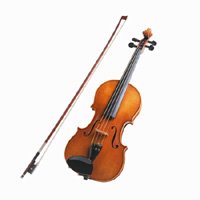Answers to Quiz
 1. 116 years. In 1328, Charles IV dies, ending the Capetian dynasty. The French, under British rule at the time, reject Edward III as king and instead place Philip of Valois on the throne. This triggers the Hundred Years War, as successive English kings attempted to uphold their claim to the French throne. In 1453, Bordeaux falls to the French; the war ends without a treaty.
1. 116 years. In 1328, Charles IV dies, ending the Capetian dynasty. The French, under British rule at the time, reject Edward III as king and instead place Philip of Valois on the throne. This triggers the Hundred Years War, as successive English kings attempted to uphold their claim to the French throne. In 1453, Bordeaux falls to the French; the war ends without a treaty.2. Ecuador. Panama hats are made exclusively in Ecuador and are woven by hand from a plant called the toquilla. The hat became known as the Panama when over a century ago the workers involved in the construction of the Panama Canal used the elegant fibre hats as protection against the burning sun.
 3. Sheep and horses. Catgut is a cord made from the intestines of various animals, especially sheep and horses, but not cats. The membrane is chemically treated, and slender strands are woven together into cords of great strength, which are used for stringing musical instruments such as the violin and the harp.
3. Sheep and horses. Catgut is a cord made from the intestines of various animals, especially sheep and horses, but not cats. The membrane is chemically treated, and slender strands are woven together into cords of great strength, which are used for stringing musical instruments such as the violin and the harp.4. November. The Russian October Revolution of 1917 took place on November 7th of the Gregorian, rather than Roman, calendar.
5. Squirrel, for instance. Camel hair brushes actually consist of various inexpensive hair types like Asian pony, bear, sheep or lesser grade squirrel hair. There is not a single hair from a real camel in a camel hair brush.
6. Dogs. The name derives probably from a north African tribe, the Canarii, or possibly the Latin term Insularia Canaria meaning "Island of the Dogs", a name applied originally only to the island of Gran Canaria. It is thought that the dense population of an endemic breed of large and fierce dogs was the characteristic that most struck the few ancient Romans who established contact with the islands by the sea.

7. Albert Frederick Arthur George, 1895-1952.
8. Crimson.

9. New Zealand. "Chinese gooseberry" is another, older name for kiwi fruit.
Apparently, various versions of this quiz have been floating around on the web forever, so no authorship claimed.

0 Comments:
Post a Comment
<< Home